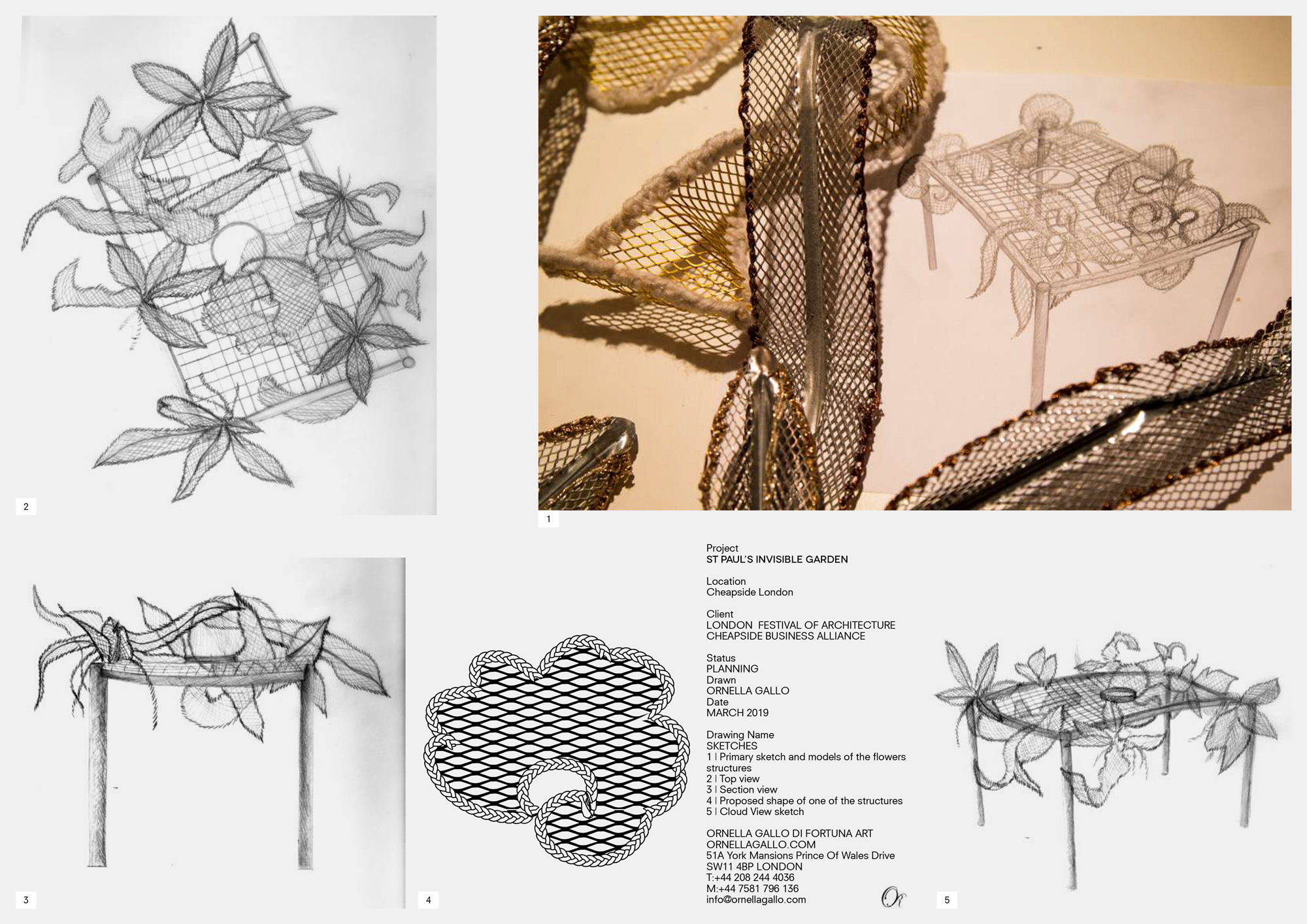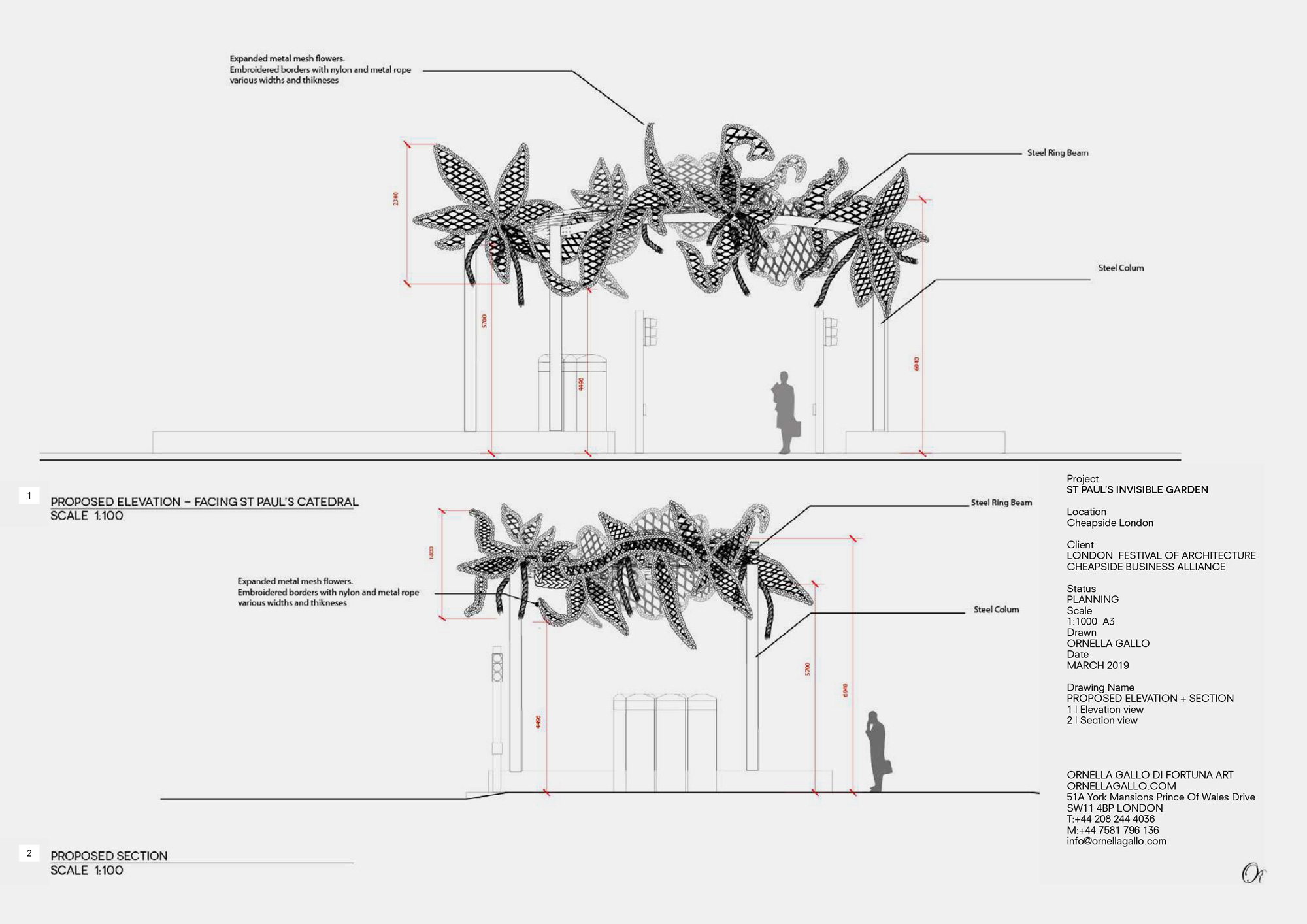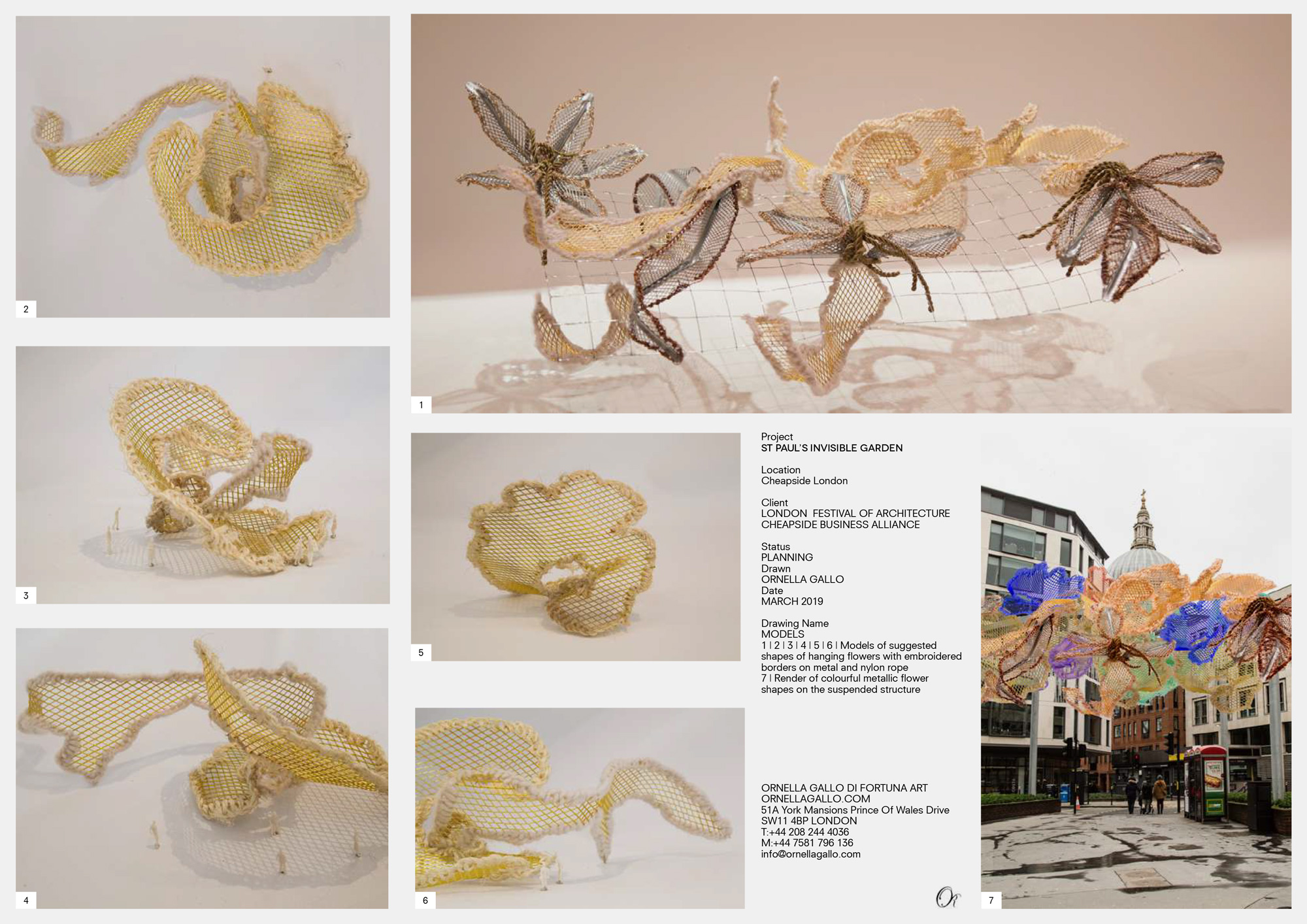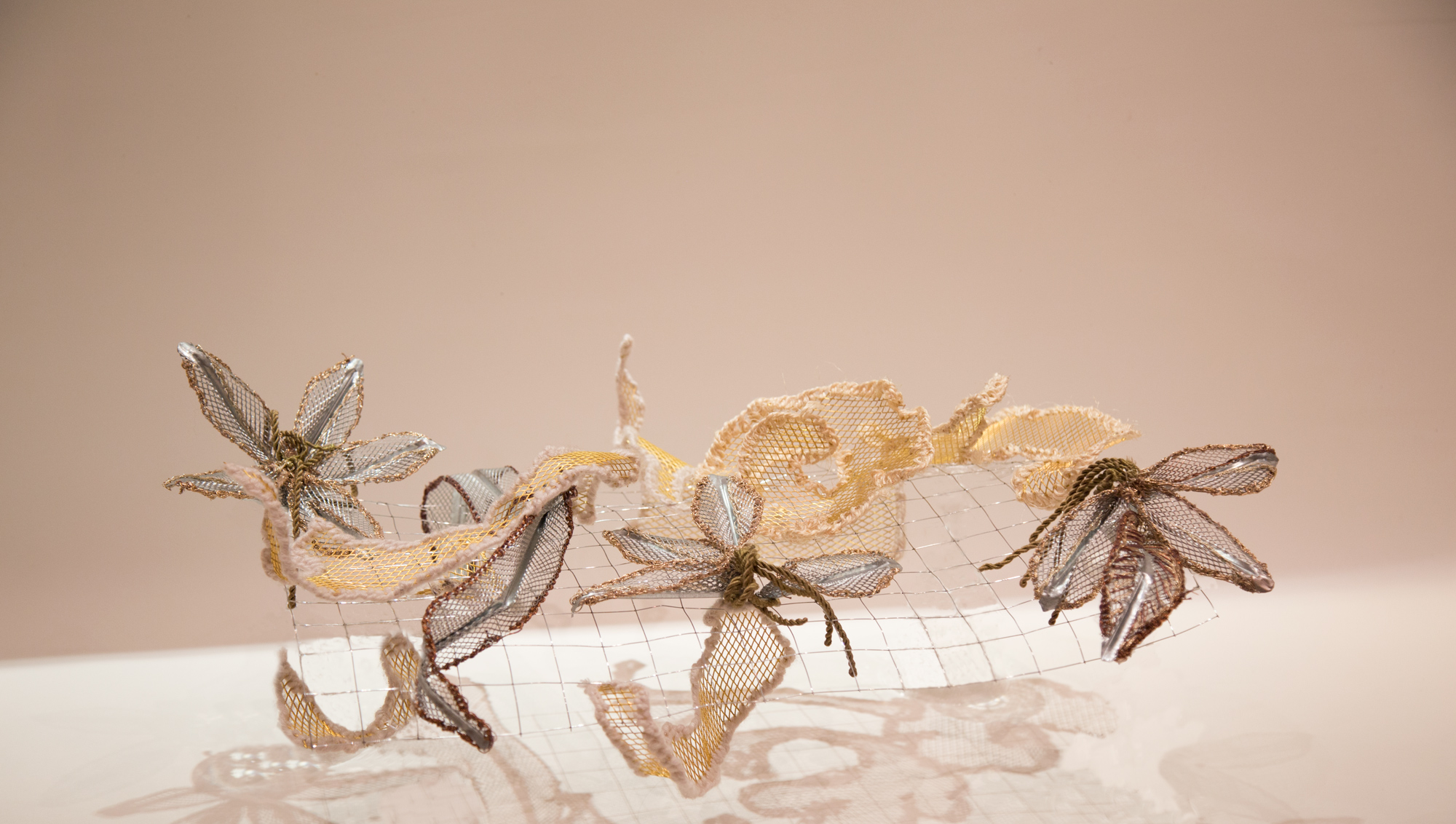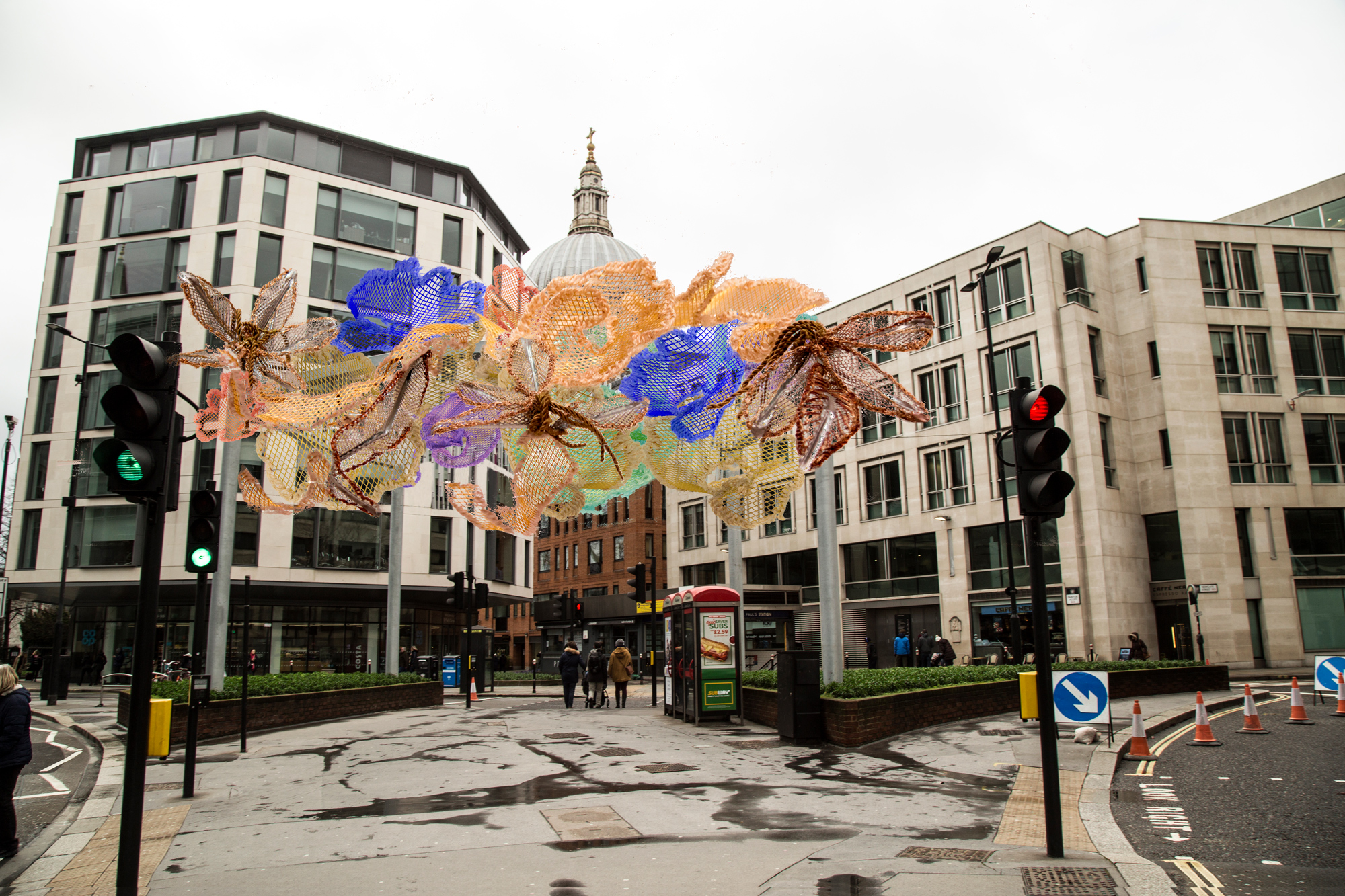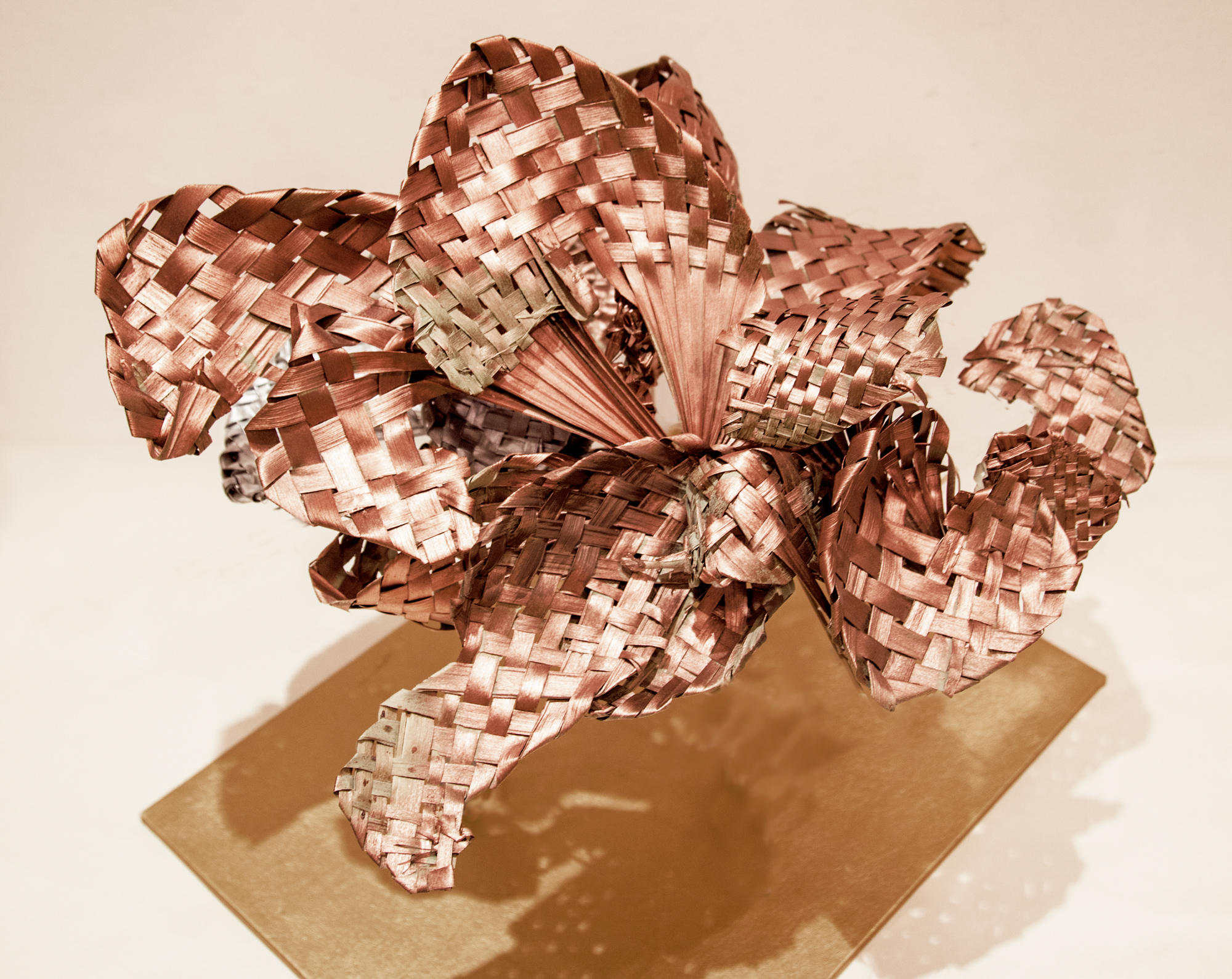St Paul’s Invisible Garden
London Festival of Architecture Cheapside Business Alliance.
Year – 2019
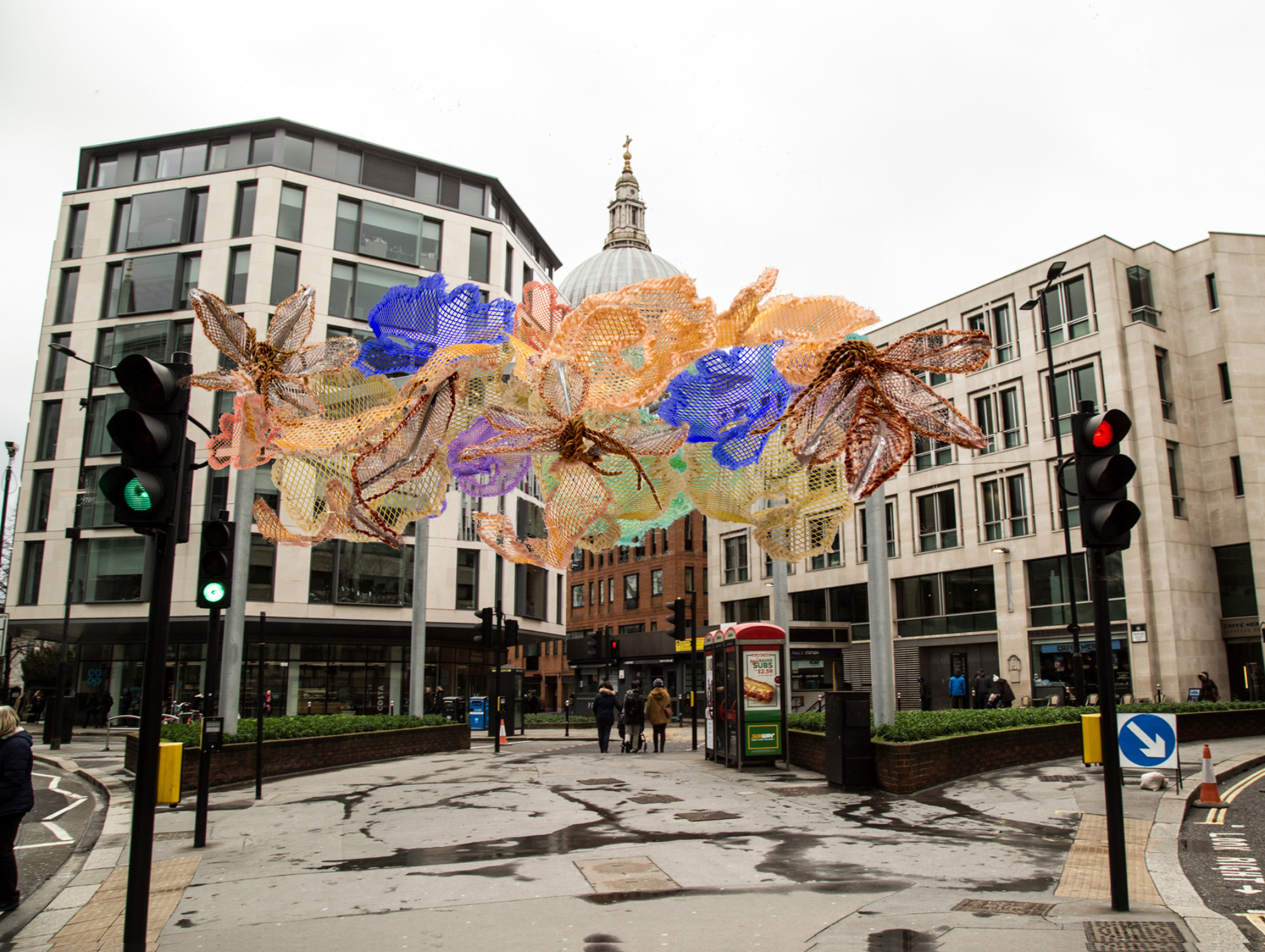
St Paul's Invisible Garden,
Proposal for a sculpture at Cheapside London - Client London Festival of Architecture Cheapside Business Aliance
YEAR – 2019
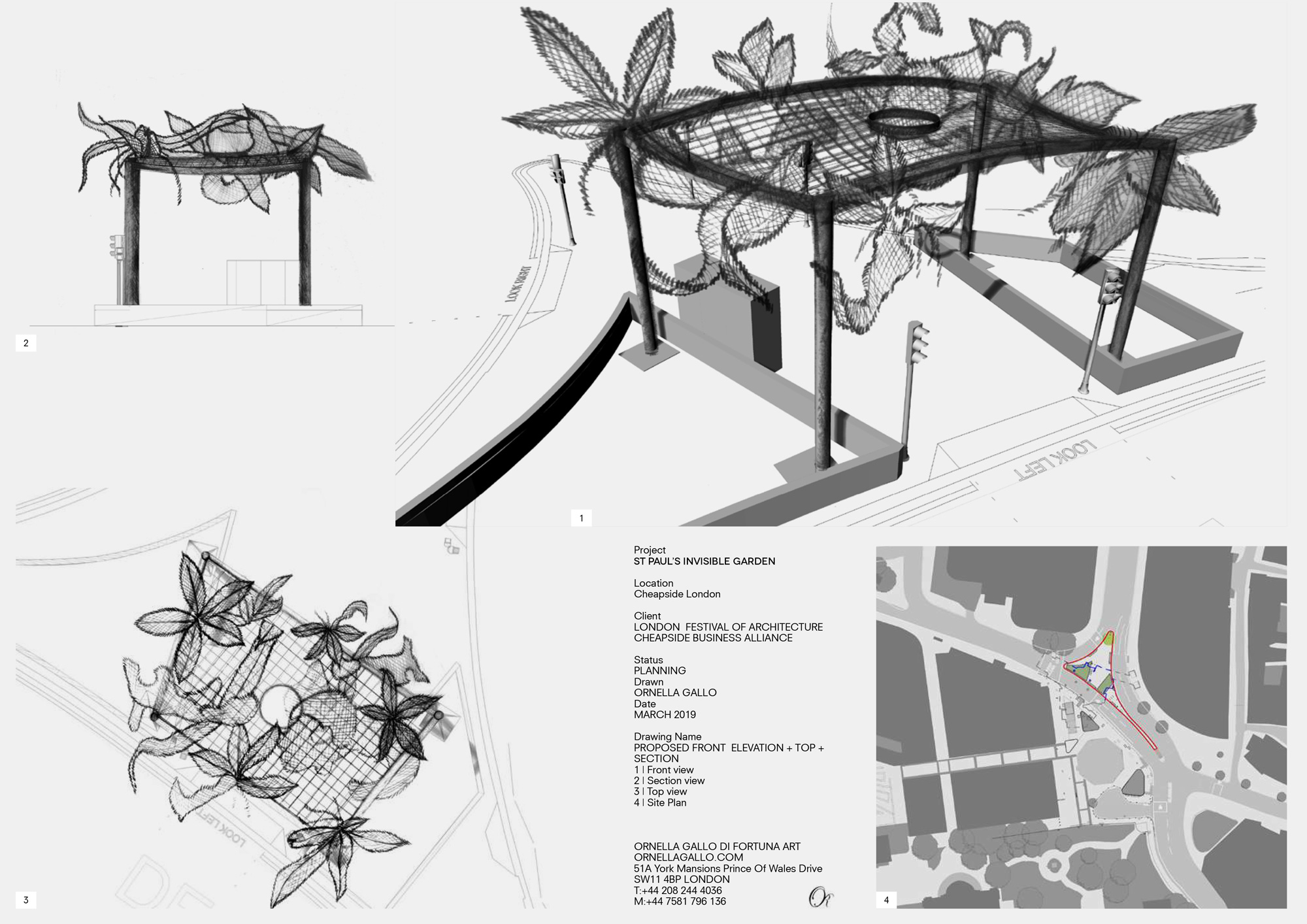
St. Paul's Invisible Garden
The artwork "Invisible Garden" embodies the delicate balance of opposing forces, seamlessly melding them into an authentic whole. It endeavors to establish a new paradigm of beauty, utilizing simple and industrial materials to explore broader philosophical concepts of inclusiveness.
Central to my artistic exploration is the human experience and our relationship with the natural world. Through "Invisible Garden," I seek to redefine the perception of sculpture, transforming it from mere inanimate objects into expressions of tangible moments in time, imbued with feelings, thoughts, and connections to nature.
Inspiration is drawn from the inherent properties and behaviors of materials, embracing the transient nature of life and repurposing them into elements that defy their original purpose. This intervention seeks to subvert expectations, imbuing strength into fragility and delicacy into robustness.
The sculpture delves into the notion of manipulation, treating materials as if they were something entirely different, blurring the lines between reality and perception. Embroidery serves as the conduit that binds disparate elements together, creating a cohesive whole.
"Invisible Garden" ventures into uncharted territory, exploring how industrial materials such as metallic expanded mesh and nylon rope can metamorphose into ethereal flowers suspended in the air. This transformation challenges conventional notions of form and materiality, infusing lightness and airiness into seemingly heavy constructs.
My approach to the installation involves converging two mediums—weaving and sculpting—using unconventional materials like metallic mesh treated as fabric and nylon rope utilized as yarn for embroidery. This fusion of techniques lends a sense of textile artistry to the architectural composition, transforming the structural canopy into a canvas for intricate metal lacework.
Looking ahead, I envision further enhancements to the piece, such as incorporating LED lights along the borders of the shapes to imbue the installation with vibrant hues and greater presence, especially during nighttime.
The artwork is designed to be installed for a year at the Traffic island in front of the St. Paul's tube station in London, serving as a captivating intersection between art, nature, and urban life.

